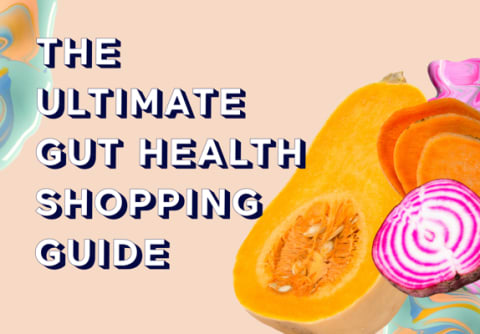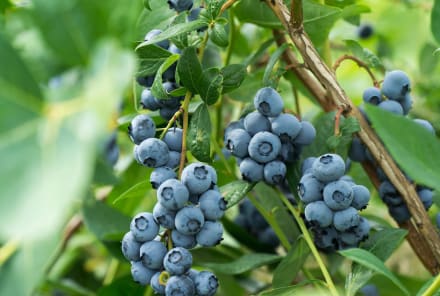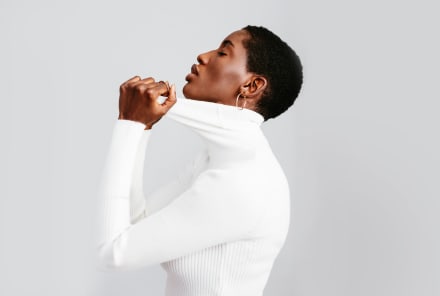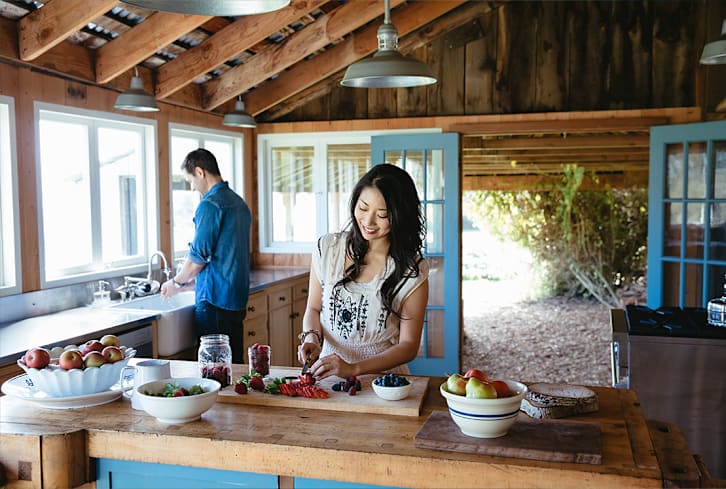Advertisement
What It’s Really Like To Have C. Diff + How I’m Healing My Gut

After being diagnosed with C. diff., Andrea Duclos, the creator of popular lifestyle and wellness blog, OhDearDrea, started on a long journey to healing her gut. Here, she shares her story with mindbodygreen. To learn more, check out her guide to what to eat—and what to avoid—after C. diff.
I went into this year, my 30th year, with the most hopeful, positive outlook possible. I spent over half a month in India. I was active, healthy, and happy.
But one round of antibiotics later, and my life would be changed forever.
Growing up, I truly abused antibiotics. As a kid, I took at least one round a year. And I spent most of college in the health center requesting monthly antibiotics for my recurring sinus infections. I never really knew the damage that was taking place each time I took them.
A few years ago, after a struggle with candida due to antibiotics, I became somewhat more knowledgeable and tried to avoid them as much as possible.
But this year, with a small infection on my finger after a cut, I thought "better safe than sorry," and filled the doctor’s prescription for clindamycin, a broad-spectrum antibiotic. Two weeks later, I found myself more sorry than I could have imagined.
After two weeks of unwavering diarrhea (think 15-plus times a day), high fevers, massive body pains to the point where I could hardly stand, losing 10 pounds, and two visits to the ER, I was diagnosed with C. diff.
Clostridioides difficile is a deadly and toxic spore-forming bacteria that takes over your colon, causing painful inflammation and extreme diarrhea.
Many of us have C. diff. in our gut, and it usually doesn't cause any problems. But antibiotics — especially clindamycin — can do serious damage to our good flora, leading the bad to flourish. Well, it turns out I had C. diff. living in my gut — and the antibiotic ramped it up.
Few people have heard of C. diff., but half a million Americans will be diagnosed this year. More than 15,000 will die1. There are also huge misconceptions that it only happens to those in nursing homes (where overuse of antibiotics is widespread), even though children and the healthiest adults can also struggle with it.
After my diagnosis, I was placed on Vancomycin, and slowly my diarrhea started to resolve. But that wasn’t the end of my health issues.
What Life After C. Diff. Is Really Like
I was given zero explanation by my doctors about what I should expect going forward. There was no advice about what my new diet should look like, what supplements I should consider, or what I could do to lower my risk (there’s a 20 percent recurrence rate).
Because my diarrhea had mostly stopped, the doctors were simply no longer concerned. And yet I had body pains every day, systematic low blood pressure, low blood sugar, and a candida overgrowth. I was relentlessly nauseous and dizzy and the brain fog was so thick I couldn't figure out what was 2 feet in front of me. On top of it all, I lived with constant flu-like symptoms.
When I asked for help with my ongoing issues, I was offered antidepressants and more antibiotics. I wasn't depressed — and I certainly didn't need to risk C. diff. again.
I visited every type of health specialist I could, seeking advice. Through this process, I realized how little we truly know about our gut. Even on the more holistic side of things, outside the hospital system, there were little answers for me.
With no solutions in front of me, I knew I was going to have to find a way to rebuild my health by myself.
How I'm Using Food to Help Heal My Gut
I started with my diet. I had done many gut cleanses in the past, especially after my previous candida issues, so I had a rough idea of where I should start.
I introduced a low-gas, all soft food diet. I had already been vegan, but now I also cut out anything with grains, sugar, and yeast, which could foster more serious candida issues.
In short, I put myself on a mostly candida-friendly diet — but with even more restrictions.
I also added more protein to my diet, to try bringing my body back to a normal state after so much malnourishment. Although I had been vegan, most of my former sources of protein (legumes, nuts, seeds, most soy) were now on a “no” list. So I started eating eggs for the first time in 10 years. They were one of the few protein sources my stomach could handle.
I later moved from soft pureed foods to seeing what cooked vegetables my stomach could handle. I'm happy to say that in the past few months I've been able to add very small amounts of cooked legumes and greens (yay, kale!) into my diet with little problem.
I also added a whole slew of probiotic and prebiotic foods. Here's what a usual day of meals looks like: I start each morning with steel-cut oatmeal. Although it’s considered a grain, it helped with my bowel movements and as a prebiotic, I knew it would help protect my gut. For lunch I have a big bowl of miso soup with buckwheat noodles and veggies. And for dinner, I eat some spiced variation of vegetables, protein, and fat. (I add turmeric and ginger to everything like it's my job, to aid in leftover inflammation issues.)
For supplements, I started taking vitamin D. Even living in South Florida, the malnourishment knocked me down to very low levels. B-12 was a regular for me. I also added glutamine to improve my gut lining, daily doses of vitamin C to build immunity, and licorice root to aid my gut
What really helped was taking a multistrain probiotic. Gut testing showed I had zero lactobacillus (a friendly type of bacteria) in my gut after all the antibiotics. With the probiotic, it was like the air had cleared, and my brain fog heavily improved.
Where I Am Today
It's now been six months since I was first diagnosed. It's been a slow process healing my gut, and I still struggle to feel well most days. But I am getting better. At the very least, my body pains are almost completely clear, my relentless fatigue is gone, and my digestion is doing great.
To this day, I still haven't been able to tolerate raw foods, most grains, gluten, and most starch. Anything raw leaves me with severe stomach pains, and refined products result in unbearable brain fog and ear ringing.
My grocery bill has tripled due to how much I consume these days. But on the upside, I know I'm feeding my body all the best things. My goal now is not just recovery but to feel better than I ever did before. I believe I can get there one day.
Going forward, I plan to be extremely cautious about any antibiotic use. And if I have no other option, I'll supplement with loads of probiotics and fermented foods to help the good flora fight.
Sure, I wish I had never taken that broad-spectrum antibiotic for something so trivial. But regret will get me nowhere. The only thing I can do is move forward, share my story, and hope to bring awareness to this huge, and growing, problem.



















